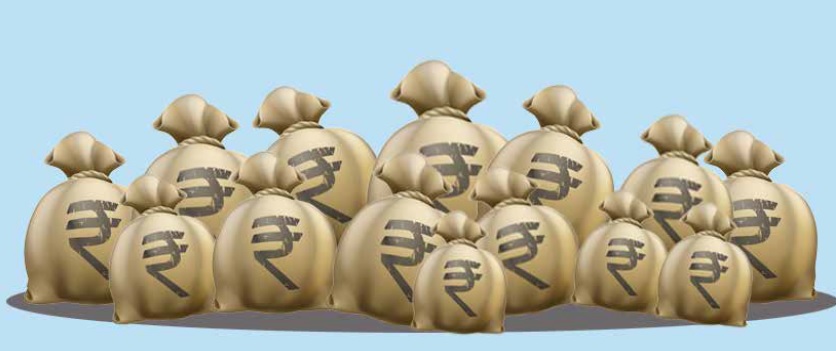By Siddharth Singh
Prime Minister Narendra Modi had long ago signalled his determination to tackle the menace of black money head on. Early on in his tenure, he had taken ownership of this goal and announced his plan to compress the black economy. In the last two and half years that he has been in office, his government has rolled out several initiatives that have systematically built up this plan. These include a special investigation team on black money, the Jan Dhan Yojana-Aadhaar-Mobile money trinity, direct benefit transfers, incentives for e-payments and a disclosure window for black money among other measures. So in this context, Demonetization at this time is a significant step because it follows the disclosure window that the government had offered to black money holders. The Prime Minister had made clear at the time of announcing the disclosure window that it was the last opportunity for voluntary disclosures, and demonetization therefore was the critical next step in the fight against black money and the larger process of transforming our economy into one that is efficient, transparent and clean.
There is enough evidence to suggest that the people in general have accepted Prime Minister Modi’s initiative to cleanse the financial system. They have warmly responded to his appeal to bear the consequences of the decision on the 500 and 1,000 rupee notes. True, it has caused some difficulties to the common people in short term because people are queuing up in front of banks but no riotous situation has arisen anywhere, demonstrating that the people are with the government. They know that to achieve something great in long term, they have to pay a little price in short term.
It may take a few more weeks for the people to go leisurely to the nearest ATM to withdraw money. Government did allow public utility services to accept the old notes for a few days just after ban because after all, the aim of the exercise — easily the most ambitious since Independence — is to rid the financial system of counterfeit notes, reduce corruption and take the anti-black money efforts to new heights.
The Modi government has clearly signalled its intention to move against illegal wealth. The currency swap deals with the stock of black money held by tax evaders. The challenge now is to ensure that the creation of new black money is minimized. There is no magic wand to solve what is a deep problem in India, but a committed government plus tax reforms such as the new goods and services tax (GST)—which creates incentives for producers to seek bills from their input providers—will be part of the solution.
In the long run, demonetisation will prove to be a significant positive move to the Indian economy and society. This also reflects India’s anti-corruption drive and is very likely to improve the country’s reformist stance. It will also provide a big boost to the government’s financial inclusion drive, pushing more households towards efficient banking and payment infrastructure. The benefits of phasing out large paper currency are significant to an economy and even more to a society such as India where corruption was treated as an acceptable way of life. A step like this can result in the cleaning up of a system for which many believed it could not be done, as earlier attempts did not have significant impact. However, the decision by Prime Minister Modi is one of the most historic steps taken in independent India. A decision like this can help curb inflation, recapitalise banks, reducing the interest rates and making the economy vibrant, with capital inflows. The taxes will be spread to a much larger population. At present only 2.6 per cent of the Indian population pays taxes. Some just don’t make enough and the others who do, siphon off the money. If this plan works, the ramifications of the currency demonetization can touch all parts of the Indian economy.
Specific advantages:
- Demonetization will help us to eradicate black money, corruption to some extent.
- Due to lack of funding there will be no arms smuggling and all the terrorist activities will also be choked.
- Counterfeit currencies are being used for financing terrorism which is being run by the enemy in India. Now Govt’s bold move of demonetization will enable the government to fight counterfeit currency/terrorist funding activities.
- Card transactions will slowly replace the cash transactions in our daily activities.
- Exchange of money in banks can only be done producing a valid identity card like PAN, Aadhar card and electoral card. By doing so it will be easy for the government to track the money which is being exchanged in banks.
- Financial Intelligence Unit will track all details of the transactions from the banks. So now it is really difficult to get rid of the black money.
- This decision will bring in more transparency in real estate sector. More transparency will have more credibility, making it more attractive to the foreign investors as well as domestic investors.
- Housing prices could witness downward pressure, helping revive demand in the sluggish housing segment.
- It will help the common man by putting an end to the artificial increase in Real Estate, Higher Education and Healthcare transactions bringing them within the reach of the common man.
So in conclusion, the Demonetization of high value currency notes in India will provide a big boost for Digital India. Reduction in cash transactions will help multiply digital and plastic transactions such as cheques, credit card and mobile wallets. PM Modi has tightened the seatbelts and honest Indians are optimistic about the joyride ahead.
(Siddharth Singh is a Research Scholar in School of International Studies, Jawaharlal Nehru University, New Delhi)
(The views expressed are the author's own and do not necessarily reflect the position of the organisation)

